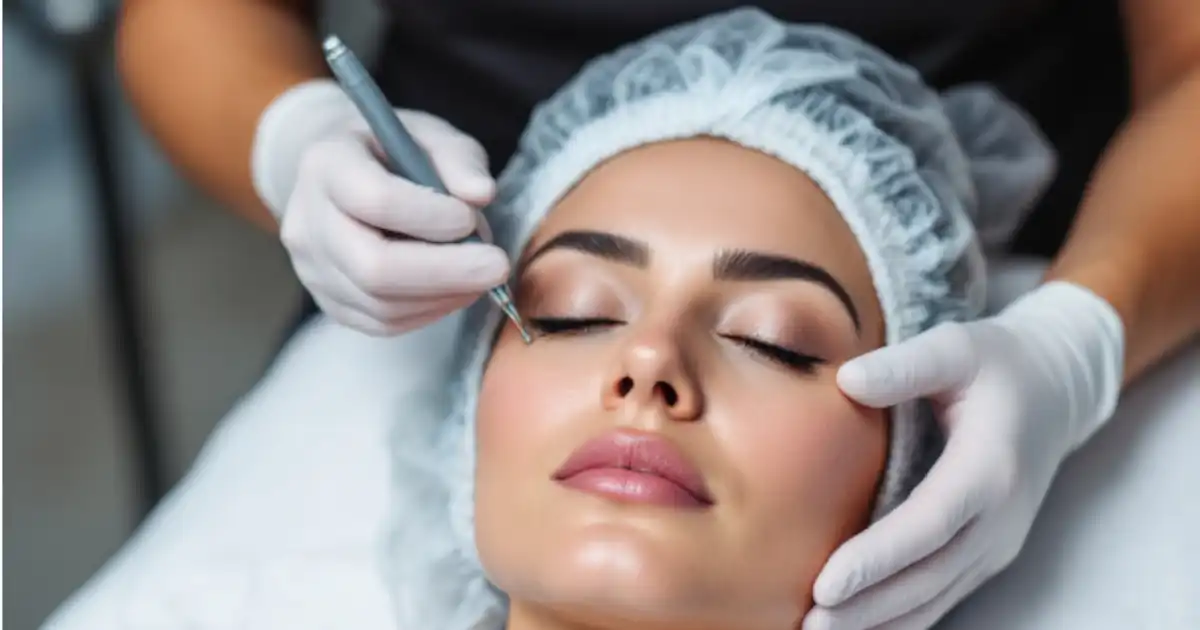Introduction to labia bleaching
In recent years, labia bleaching has emerged as a controversial beauty trend among women seeking to achieve a lighter skin tone in their intimate areas. This practice, often marketed as a way to enhance personal aesthetics and boost confidence, has sparked numerous discussions regarding its safety, effectiveness, and ethical implications. In this article, we will explore what labia bleaching entails, the reasons behind its growing popularity, the potential risks involved, and safer alternatives for those considering this cosmetic procedure.
What is Labia Bleaching?
Labia bleaching refers to the process of lightening the color of the labia majora and labia minora—the outer and inner folds of the vulva, respectively. This can be achieved through various methods, including topical creams, chemical peels, laser treatments, and even at-home remedies. The goal of labia bleaching is often to achieve a more uniform skin tone, which some believe enhances the overall appearance of the genital area.
The Rise of Labia Bleaching
The rise in popularity of labia bleaching can be attributed to several factors:
- Social Media Influences: Platforms like Instagram and TikTok have given rise to influencers and beauty standards that prioritize light skin tones. This has led to an increased interest in cosmetic procedures aimed at altering one’s natural appearance.
- Cultural Norms: In many cultures, lighter skin is often equated with beauty, success, and desirability. This cultural bias can pressure individuals to seek cosmetic procedures that align with these ideals.
- Increased Awareness of Cosmetic Options: As women become more empowered to make choices regarding their bodies, the demand for cosmetic procedures, including labia bleaching, has risen.
- Desire for Aesthetic Enhancement: Many women seek labia bleaching to achieve a more aesthetically pleasing appearance, often in line with personal preferences or societal standards.
Why Do Women Choose Labia Bleaching?
Women may choose labia bleaching for various reasons, including:
- Self-Confidence: Some women believe that lighter labia will enhance their overall self-image, particularly in intimate situations.
- Partner Preferences: Influences from partners or societal norms may lead some women to feel that their appearance is lacking if they do not conform to certain standards.
- Perceived Hygiene: There is a misconception that lighter skin tones in the intimate area are more hygienic or appealing.
Methods of Labia Bleaching
There are several methods to achieve labia bleaching, each with varying degrees of effectiveness and safety:

Topical creams designed for skin lightening typically contain ingredients such as hydroquinone, kojic acid, or alpha-arbutin. These creams work by inhibiting melanin production in the skin. However, prolonged use can lead to skin irritation, allergic reactions, or even more severe side effects.
2. Chemical Peels
Chemical peels involve the application of a chemical solution that exfoliates the skin’s outer layers, promoting new skin growth. While this method can be effective for lightening discoloration, it can also lead to irritation and requires proper aftercare to avoid complications.
3. Laser Treatments
Laser treatments use focused light to target melanin in the skin, effectively reducing pigmentation. This method is often performed by dermatologists and can yield faster results. However, it can also be expensive and may involve discomfort during the procedure.
4. At-Home Remedies
Some individuals turn to homemade remedies, such as lemon juice, yogurt, or turmeric, believing these natural ingredients will lighten skin tone. While these methods are less invasive, they may not be effective and can sometimes lead to skin irritation or allergic reactions.
Risks and Considerations
While the allure of labia bleaching may be strong, it is essential to consider the potential risks associated with these procedures. Some of the most common risks include:
- Skin Irritation: Many bleaching agents can cause redness, itching, or burning sensations, particularly in sensitive areas.
- Allergic Reactions: Some individuals may experience allergic reactions to ingredients in topical creams or chemical solutions, leading to further complications.
- Discoloration: Ironically, some methods of labia bleaching can result in a condition known as post-inflammatory hyperpigmentation, where the skin darkens as a reaction to irritation.
- Infections: Procedures that involve breaking the skin’s barrier, such as chemical peels or laser treatments, can increase the risk of infections if proper hygiene is not maintained.
- Psychological Effects: The pressure to conform to beauty standards can lead to anxiety, body dysmorphia, or dissatisfaction with one’s appearance, regardless of the outcome of the procedure.
Ethical Considerations
The trend of labia bleaching raises several ethical questions, particularly regarding societal pressures on women to conform to specific beauty standards. The commercialization of intimate areas and the promotion of such procedures can perpetuate harmful stereotypes and undermine the diversity of natural body types. Furthermore, the beauty industry often fails to address the psychological impact these practices may have on individuals.
Safer Alternatives to Labia Bleaching
For those interested in enhancing their intimate area without the risks associated with labia bleaching, several safer alternatives exist:
1. Skincare Routine
Maintaining a proper skincare routine for the genital area can help keep the skin healthy and hydrated. Using gentle cleansers and moisturizers can improve overall skin health without the need for bleaching.
2. Healthy Lifestyle Choices
A well-balanced diet, regular exercise, and adequate hydration can contribute to overall skin health. Vitamins and minerals found in fruits and vegetables can help promote a healthy complexion.
3. Professional Guidance
If concerns about skin discoloration persist, consulting a dermatologist or healthcare professional can provide tailored advice and treatment options that prioritize safety and health.
4. Embracing Natural Beauty
Encouraging a positive body image and embracing natural beauty can empower individuals to feel confident in their skin without the need for invasive procedures. Supporting campaigns that promote body positivity can help shift societal standards toward acceptance of diverse body types.
Conclusion
Labia bleaching is a complex and often controversial practice that reflects broader societal issues surrounding beauty standards, self-image, and individual choice. While the desire for aesthetic enhancement is understandable, it is crucial to approach such procedures with caution and awareness of the potential risks involved. By prioritizing skin health, seeking professional guidance, and embracing natural beauty, individuals can make informed decisions that align with their values and promote overall well-being. Ultimately, the journey toward self-acceptance and confidence should be rooted in love for oneself, regardless of societal pressures.
Frequently Asked Questions (FAQs)
What should I consider before opting for intimate skin lightening?
Before pursuing any intimate skin lightening methods, it is crucial to consult a dermatologist to understand the potential risks and benefits. Consider your skin type, any allergies, and the credibility of the products or treatments you’re considering.
How do I ensure the safety of skin-lightening products for sensitive areas?
To ensure safety, always check for dermatological testing and approval on product labels. Perform a patch test before applying any product to sensitive areas. It’s also wise to choose products free from harsh chemicals and consult a skincare professional.
Are there any side effects associated with brightening treatments for intimate areas?
Yes, potential side effects may include skin irritation, redness, itching, or allergic reactions. In some cases, treatments might lead to uneven skin tone or hyperpigmentation if not done correctly. Always seek professional advice to minimize risks.
How long does it take to see results from lightening treatments?
The time frame for visible results varies with each method. Topical creams may take a few weeks to show changes, while laser treatments might offer quicker results. Consistency and adherence to the recommended regimen are key to achieving desired outcomes.
Can lifestyle changes impact the effectiveness of skin tone treatments?
Absolutely, maintaining a healthy lifestyle can enhance the effectiveness of skin treatments. A balanced diet, adequate hydration, and regular exercise can improve skin health, supporting the results of any cosmetic procedures.
Are there non-invasive options to improve skin tone in intimate areas?
Yes, non-invasive options include using natural ingredients known for their brightening properties, such as aloe vera or vitamin C. These can be part of a gentle skincare routine that promotes an even skin tone without harsh treatments.
READ ALSO: The Ultimate Guide to Kumkumadi Oil: Benefits, Uses, and More
 Touch Blog
Touch Blog



